When facing a cancer diagnosis, you’ll likely encounter various medical tests and procedures. Among the most sophisticated is the FDG PET scan – a powerful imaging technique that has revolutionized how doctors detect, stage, and monitor cancer. We will explain everything you need to know about FDG PET scans in straightforward terms.
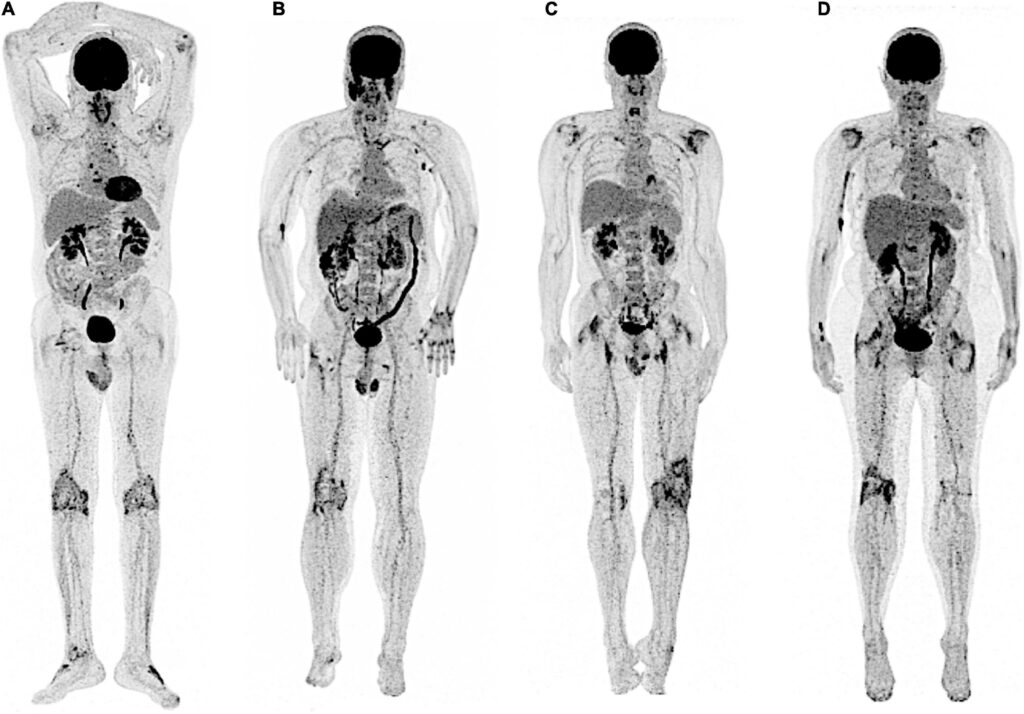
What Is an FDG PET Scan?
FDG PET stands for Fluorodeoxyglucose Positron Emission Tomography. This advanced imaging test uses a radioactive form of sugar to detect areas of high metabolic activity in your body. Cancer cells consume sugar much faster than normal cells, making them appear as bright spots on the scan images.
The test combines two key components: FDG (a radioactive tracer) and PET (the scanning technology). Together, they create detailed pictures showing how your cells are functioning at the molecular level, rather than just what your organs look like.
How Does FDG Work?
The process begins with an injection of the FDG tracer into your arm vein. This radioactive glucose travels through your bloodstream and gets absorbed by your cells. Cancer cells eagerly consume this sugar because they need enormous amounts of energy to grow and divide rapidly.
After waiting 60-90 minutes for the tracer to circulate, you’ll lie on a scanning table that moves through a large, ring-shaped machine. The PET scanner detects radiation emitted by the FDG and creates detailed images showing where the radioactive sugar has concentrated.
Areas with high sugar consumption appear as bright “hot spots” on the scan, often indicating cancer, infection, or inflammation. Normal tissues show lower uptake and appear dimmer.
What Does an FDG Scan Detect?
Cancer Applications
FDG PET scans excel at detecting various aspects of cancer:
Primary Tumors: Finding the original cancer site, especially in difficult-to-reach locations like the head, neck, or chest.
Cancer Staging: Determining how far cancer has spread throughout the body, including lymph nodes and distant organs.
Treatment Monitoring: Tracking how well chemotherapy, radiation, or other treatments are working by measuring changes in metabolic activity.
Recurrence Detection: Identifying cancer that has returned after treatment, often before it’s visible on other scans.
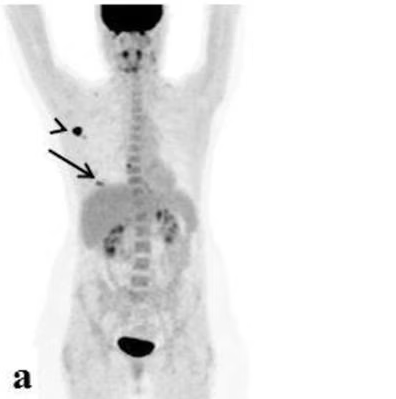
Other Medical Conditions
Beyond cancer, FDG scans can detect:
- Heart muscle damage after heart attacks
- Brain disorders like Alzheimer’s disease
- Seizure locations in epilepsy patients
- Serious infections and inflammation
- Blood vessel diseases
Cost Considerations
FDG PET scans are among the more expensive medical imaging procedures. Several factors contribute to the high cost:
- Expensive Equipment: PET scanners cost millions of dollars and require specialized facilities
- Radioactive Tracer: FDG must be produced fresh at specialized facilities and transported quickly
- Specialized Staff: Highly trained nuclear medicine professionals operate the equipment
- Time Requirements: Each scan takes 2-3 hours, limiting daily capacity
Most insurance plans cover FDG scans when medically necessary for cancer diagnosis or treatment monitoring, though prior authorization is usually required.
FDG PET vs Other PET Scans
| Aspect | FDG PET | F-18 DOPA PET | C-11 Choline PET | Ga-68 PSMA PET | F-18 Fluciclovine PET |
| Tracer Chemistry | Radioactive glucose analog | Radioactive amino acid | Radioactive membrane component | Radioactive prostate antigen | Radioactive amino acid |
| Half-Life | 110 minutes | 110 minutes | 20 minutes | 68 minutes | 110 minutes |
| Production Method | Cyclotron required | Cyclotron required | Cyclotron on-site | Generator system | Cyclotron required |
| Primary Indications | Most cancers, brain, heart | Brain tumors, neuroendocrine | Prostate, brain cancers | Prostate cancer | Prostate cancer recurrence |
| Fasting Requirements | 4-6 hours | None | None | None | None |
| Diabetic Considerations | Significant impact | Minimal impact | No impact | No impact | Minimal impact |
| Brain Tumor Detection | Good but high background | Excellent specificity | Limited use | Not applicable | Not applicable |
| Prostate Cancer | Poor sensitivity | Not used | Very good | Excellent | Excellent |
| Bone Metastases | Excellent | Good | Very good | Excellent | Good |
| Lymph Node Detection | Very good | Limited | Good | Excellent | Good |
| Availability | Widespread | Limited centers | Very limited | Growing availability | Limited centers |
| Scan Duration | 20-30 minutes | 20-30 minutes | 20-30 minutes | 15-20 minutes | 20-30 minutes |
| Injection to Scan Time | 60-90 minutes | 60-90 minutes | 30-60 minutes | 60-90 minutes | 30-60 minutes |
| Radiation Dose | ~7 mSv | ~7 mSv | ~2 mSv | ~2 mSv | ~7 mSv |
| Cost Comparison | Standard | Higher | Much higher | Higher | Higher |
| Insurance Coverage | Broad coverage | Limited coverage | Very limited | Growing coverage | Limited coverage |
| False Positives | Inflammation, infection | Fewer false positives | Benign conditions | Very specific | Some false positives |
| False Negatives | Well-differentiated tumors | Rarely | Aggressive tumors | Rare | Some small lesions |
| Combination with CT | Routine | Routine | Usually | Routine | Routine |
| Combination with MRI | Available | Common for brain | Rarely | Growing use | Rarely |
| Research Applications | Extensive | Moderate | Limited | Expanding | Growing |
| Future Developments | New tracers combining | AI enhancement | Limited growth | New analogs | Improved synthesis |
When Is an FDG PET Required?
Cancer Diagnosis and Staging
- Confirming suspected cancer
- Determining cancer stage and spread
- Finding unknown primary tumor sources
- Planning surgery or radiation therapy
Treatment Monitoring
- Evaluating chemotherapy effectiveness
- Assessing radiation therapy results
- Detecting treatment resistance early
- Adjusting treatment plans
Follow-Up Care
- Detecting cancer recurrence
- Investigating rising tumor markers
- Evaluating suspicious symptoms in survivors
Specific Cancer Types
FDG PET are particularly valuable for:
- Lung cancer
- Lymphoma
- Colorectal cancer
- Head and neck cancers
- Breast cancer
- Melanoma
- Esophageal cancer

Preparation Before Your FDG Scan
Dietary Requirements
Fasting: Don’t eat for 4-6 hours before your scan. This keeps blood sugar low, making cancer cells more likely to absorb the FDG tracer.
Allowed During Fasting:
- Plain water (drink plenty)
- Essential medications with small water sips
- Nothing else by mouth
Avoid 24 Hours Before:
- Strenuous exercise
- High-carbohydrate foods
- Alcohol
- Excessive caffeine
Medication Management
Diabetes Medications: Skip short-acting insulin on scan day but continue long-acting insulin as prescribed. Bring glucose monitoring supplies and post-scan snacks.
Other Medications: Take regular medications with water. Bring a complete medication list for staff review.
What to Bring?
- Insurance cards and ID
- List of current medications
- Previous imaging studies if requested
- Comfortable reading material
- Post-scan snack (especially if diabetic)
Clothing and Personal Items
- Wear comfortable, loose-fitting clothes
- Avoid metal zippers, buttons, or underwire bras
- Remove all jewelry before the scan
- Leave valuables at home
The Scanning Process
Arrival and Preparation (30-60 minutes)
- Complete registration and paperwork
- Review medical history and medications
- Blood glucose check (if diabetic)
- IV line placement
- Change into hospital gown if needed
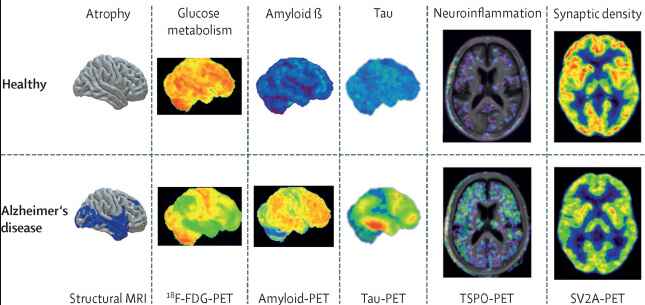
Tracer Injection and Waiting (60-90 minutes)
- Quick injection of FDG tracer
- Rest quietly in comfortable chair
- Avoid talking, reading, or movement
- Blankets provided for comfort
Actual Scanning (20-30 minutes)
- Lie on padded table that moves through scanner
- Arms positioned overhead or at sides
- Stay as still as possible
- Technologist maintains contact throughout
After the Scan
- Resume normal activities immediately
- Drink plenty of fluids for 24 hours
- Avoid prolonged contact with pregnant women and small children
- Results typically available in 1-2 days
Understanding Your Results
Normal Findings
Normal FDG PET scans show expected uptake patterns in the brain, heart, kidneys, and bladder. Other organs show minimal uptake when properly prepared.
Abnormal Findings
High Uptake Areas may indicate:
- Cancer (primary or metastatic)
- Infection or inflammation
- Recent trauma or surgery
- Arthritis or joint disease
Quantitative Measurements:
- SUV (Standardized Uptake Value) measures tracer concentration
- SUV below 2.5: Usually benign
- SUV above 2.5: May indicate cancer
- Higher SUV values suggest more aggressive disease
Risks and Safety
Radiation Exposure
FDG scans expose you to about 7-14 mSv of radiation, equivalent to 2-3 years of natural background radiation. This is similar to other nuclear medicine tests and generally considered safe for diagnostic purposes.
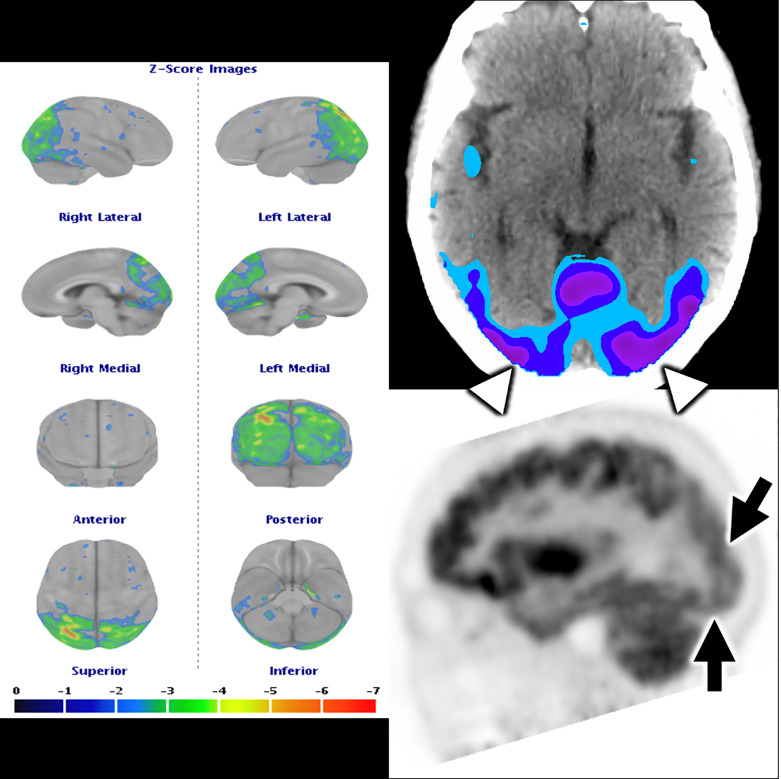
Side Effects
Serious side effects are extremely rare. The most common concerns include:
- Mild soreness at injection site
- Very rare allergic reactions
- Temporary increase in blood sugar (diabetics)
Special Populations
Pregnancy: FDG PET is avoided during pregnancy unless absolutely necessary due to radiation exposure to the developing baby.
Breastfeeding: Nursing mothers should pump and discard breast milk for 12-24 hours after the scan.
Children: Pediatric doses are carefully calculated based on weight to minimize radiation exposure.
Frequently Asked Questions
How long does the radioactive tracer stay in my body?
FDG has a half-life of about 110 minutes, meaning half disappears every 110 minutes. Most is eliminated through your kidneys within 24 hours.
Can I drive after the scan?
Yes, FDG doesn’t impair your ability to drive. You can resume normal activities immediately.
What if I’m claustrophobic?
PET scanners are much more open than MRI machines. Most claustrophobic patients tolerate them well. Mild sedation is available if needed.
How accurate are FDG PET scans?
Accuracy varies by cancer type but generally ranges from 85-95% for detecting cancer when used appropriately.
Can infections cause false-positive results?
Yes, infections and inflammation can absorb FDG, appearing similar to cancer. This is why your medical history is important for interpretation.
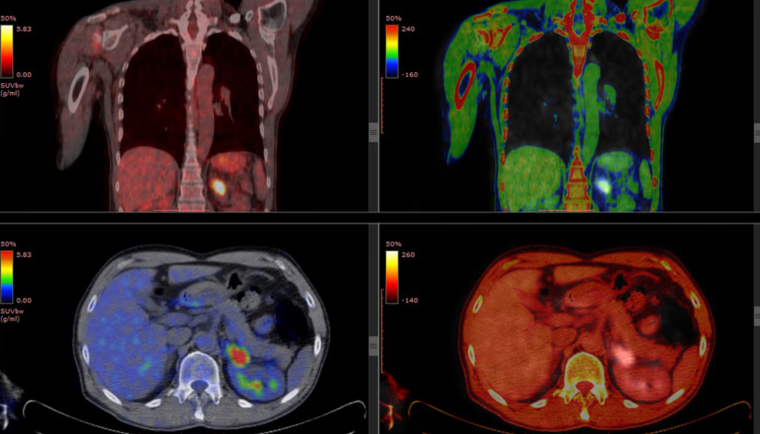
How often can I have FDG PET scans?
There’s no specific limit, but doctors minimize radiation exposure when possible. Cancer patients often need multiple scans for monitoring.
What if I accidentally ate during fasting?
Contact the imaging center immediately. Depending on what and when you ate, they may need to reschedule your scan.
Can I exercise after the scan?
Yes, normal activities help eliminate the tracer from your body. Drink plenty of fluids.
How long for results?
Results are typically available within 1-2 business days. Your doctor will explain what they mean for your treatment.
What about breastfeeding?
Pump and discard breast milk for 12-24 hours after the scan. You can pump and store milk beforehand.
Conclusion
FDG PET scans represent a major advance in cancer detection and monitoring. While the preparation requires some planning and the cost can be significant, these scans provide crucial information that helps doctors make the best treatment decisions for your specific situation.
The key to a successful FDG PET is proper preparation – following fasting instructions, managing medications appropriately, and arriving well-prepared. Most patients find the actual scanning process comfortable and straightforward.
If your doctor has recommended an FDG scan, it’s because they believe the information it provides will be valuable for your care. Don’t hesitate to ask questions about the procedure, preparation requirements, or what the results might mean for your treatment plan. Being well-informed helps you get the most benefit from this sophisticated diagnostic tool.
Remember that FDG PETs are just one part of your overall medical evaluation. Your doctor will combine these results with other tests, physical examinations, and your medical history to develop the most appropriate treatment approach for your individual situation.
